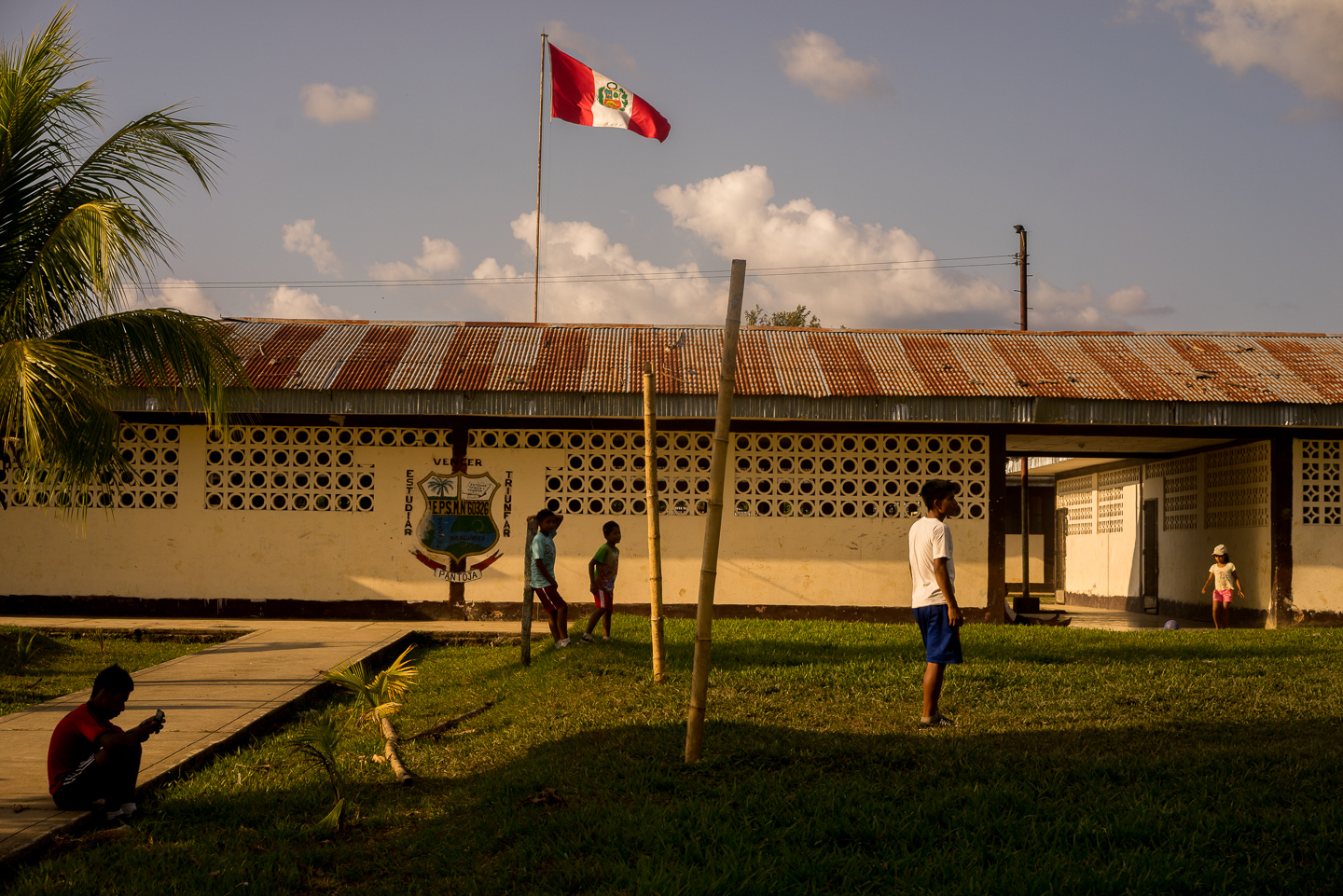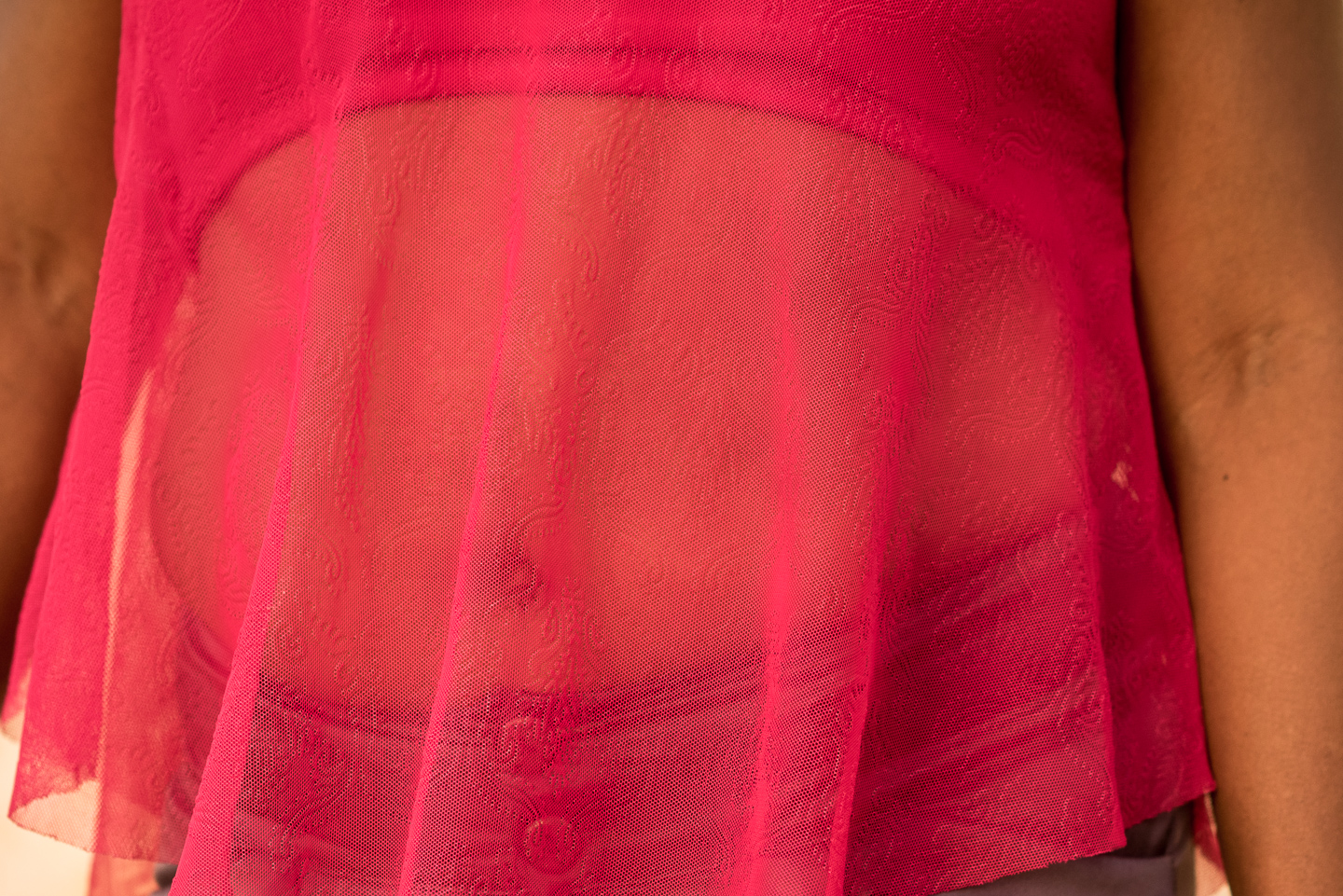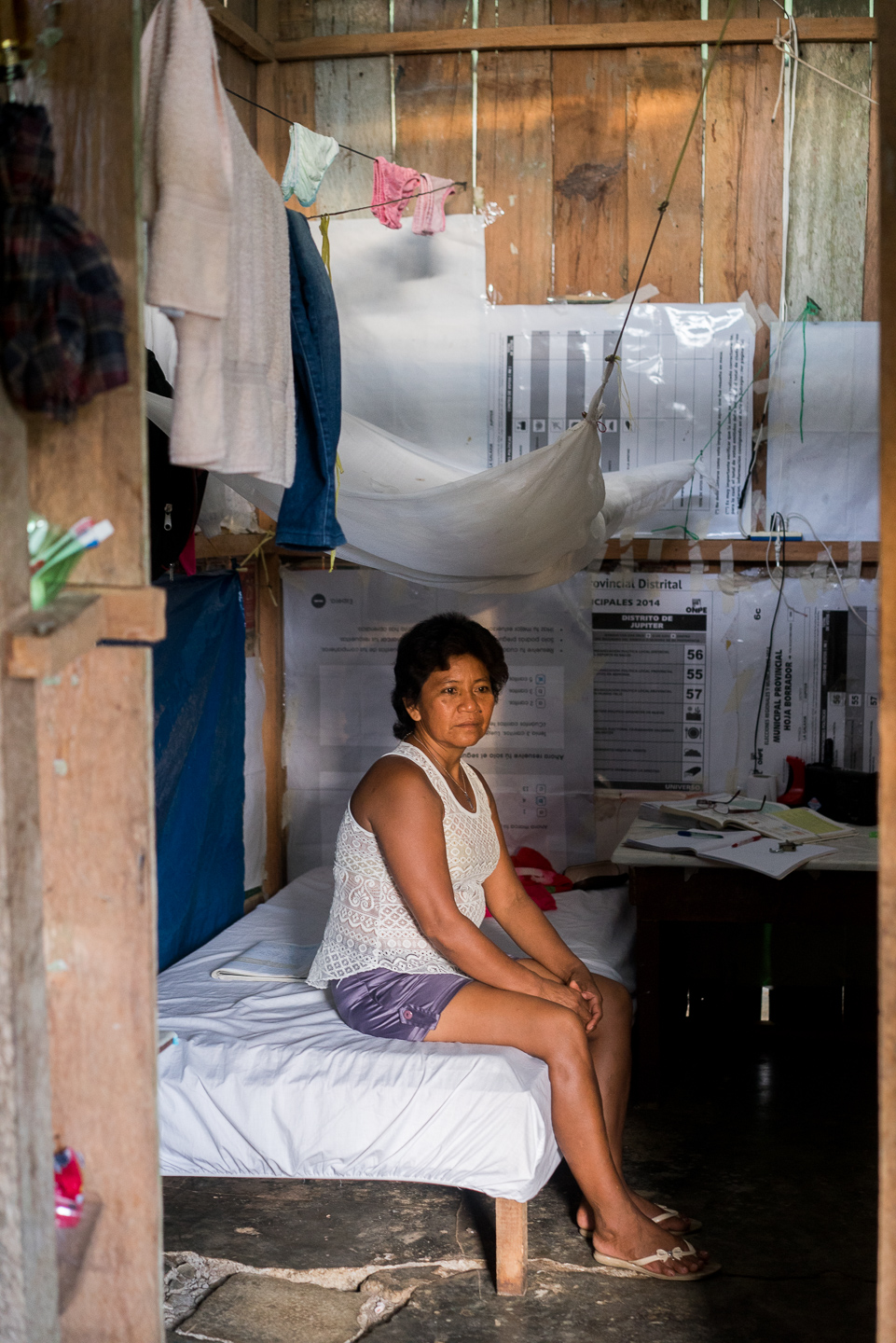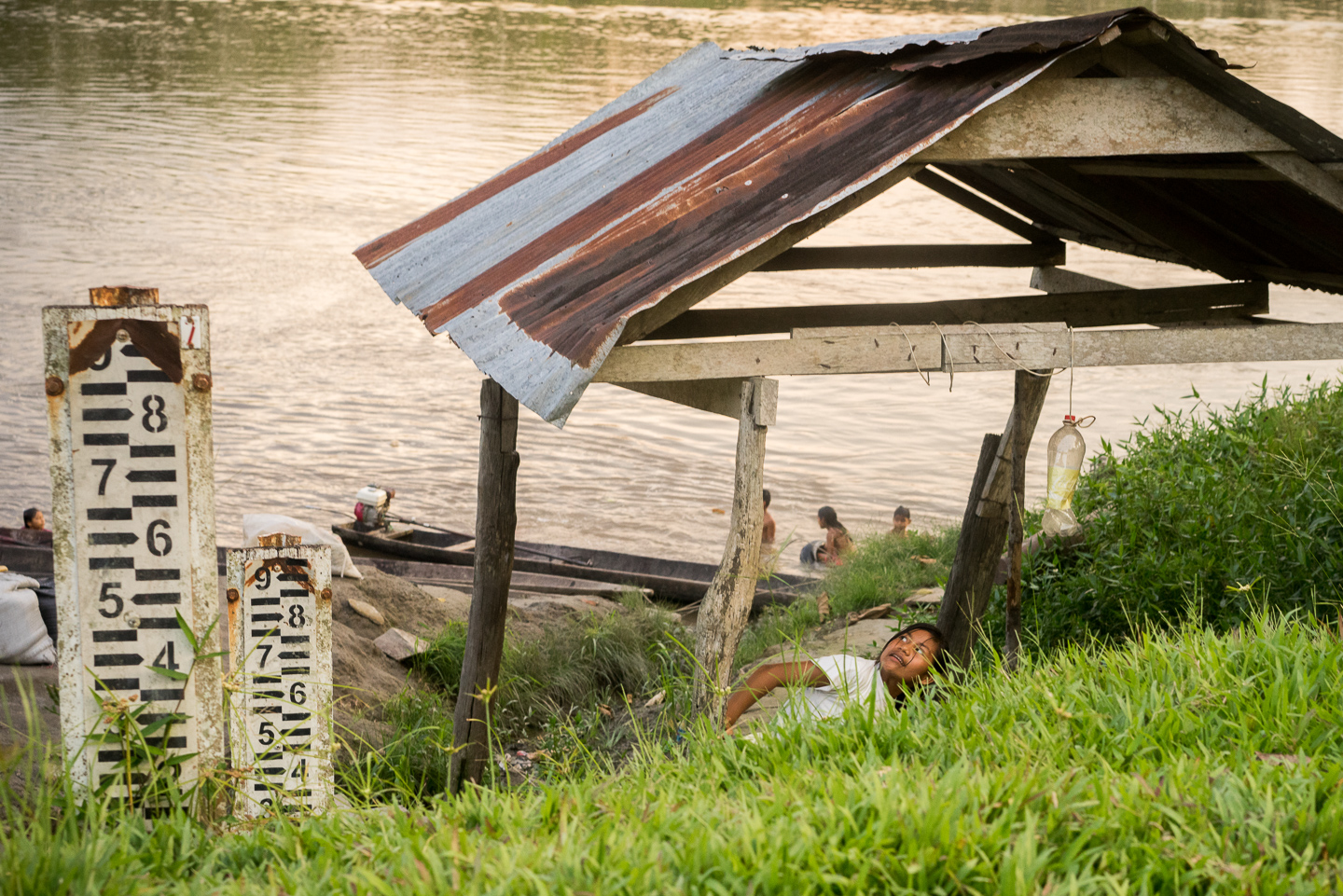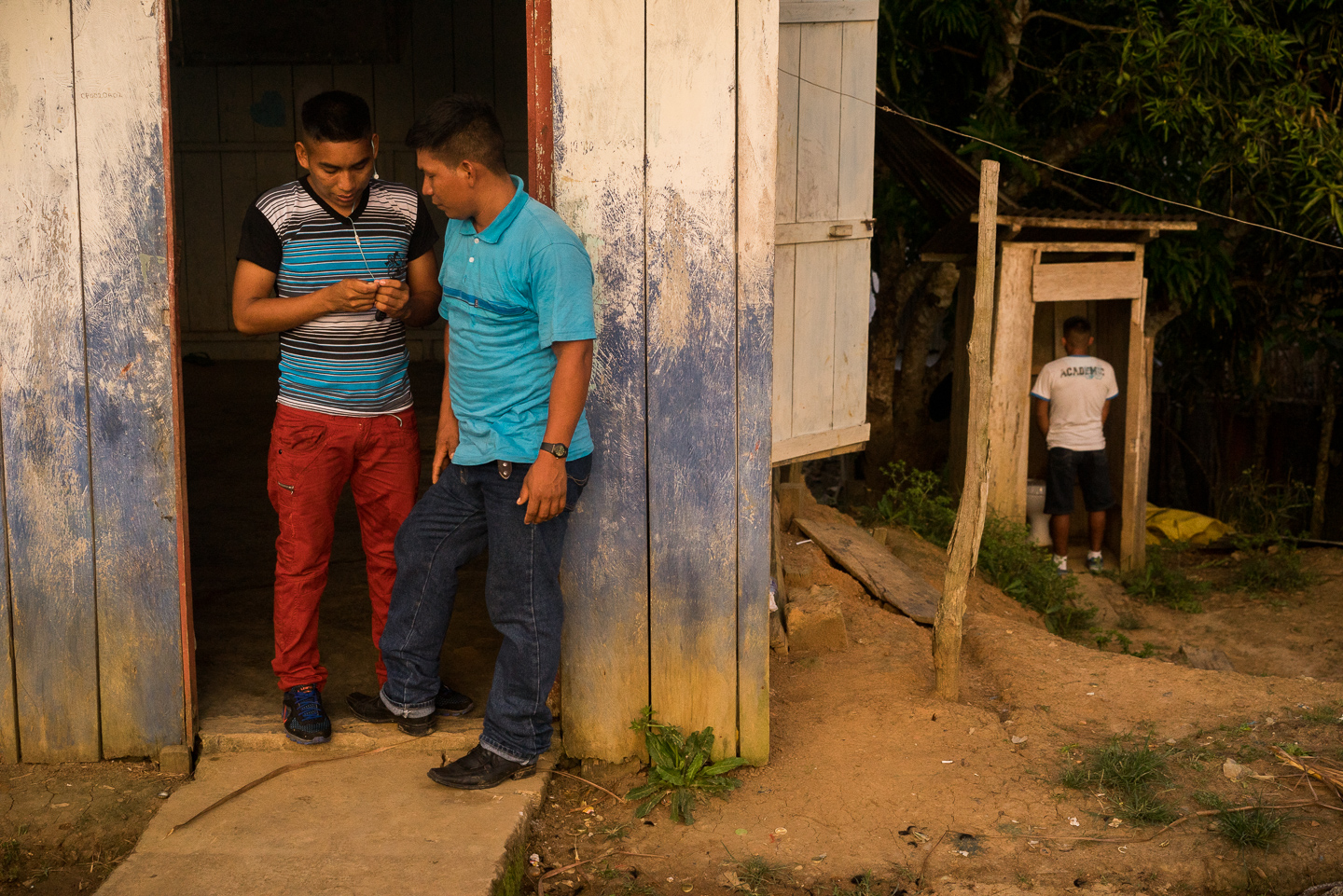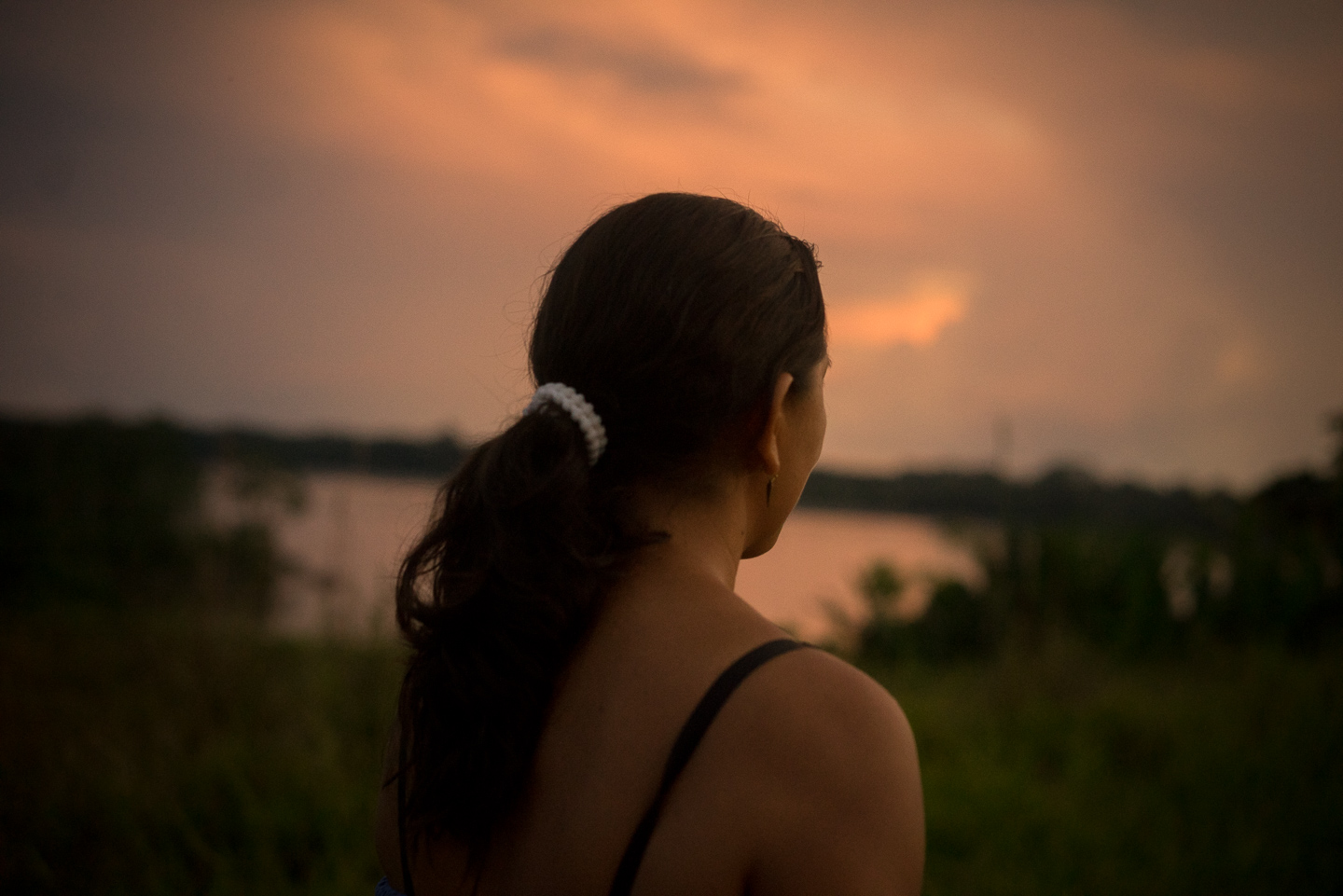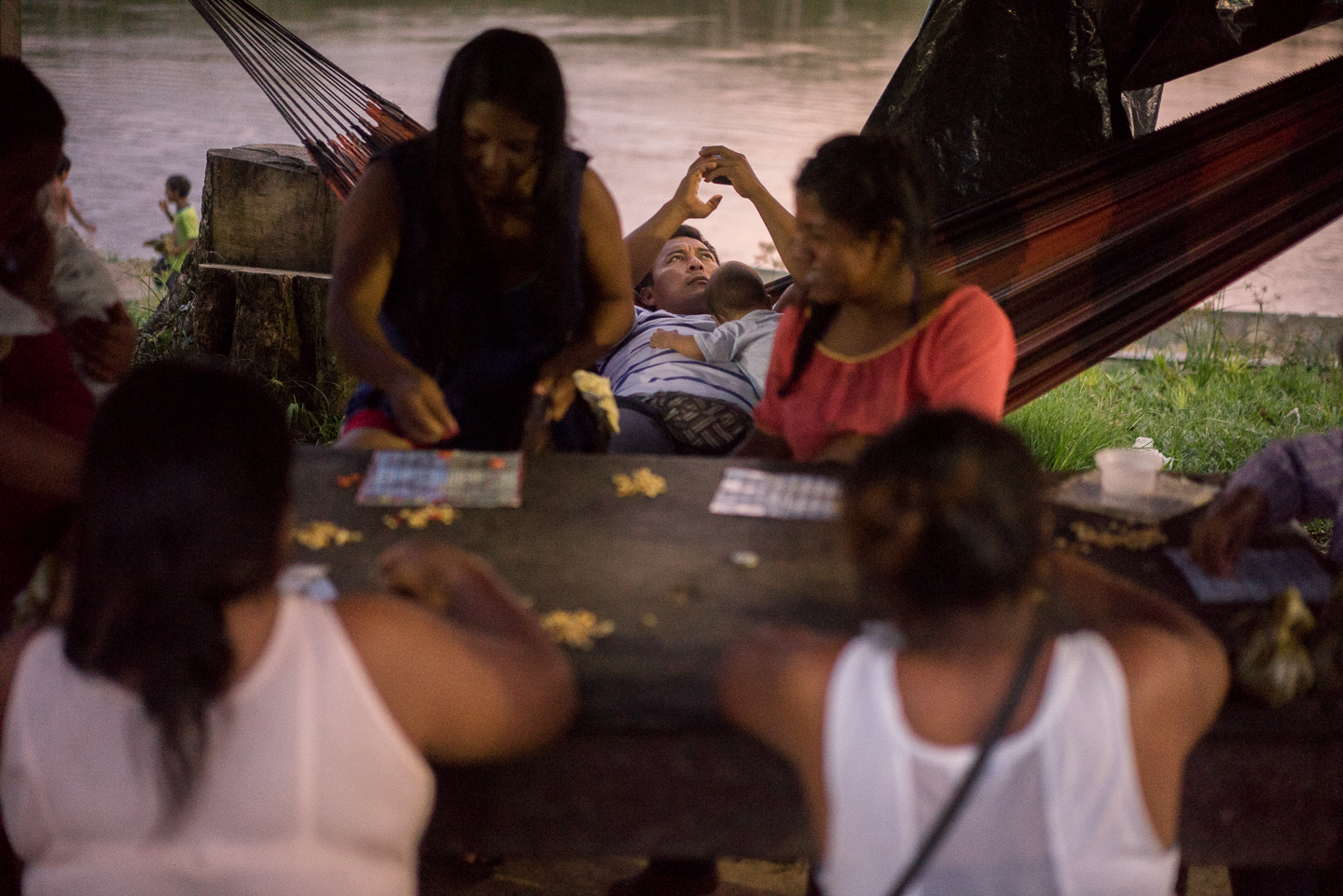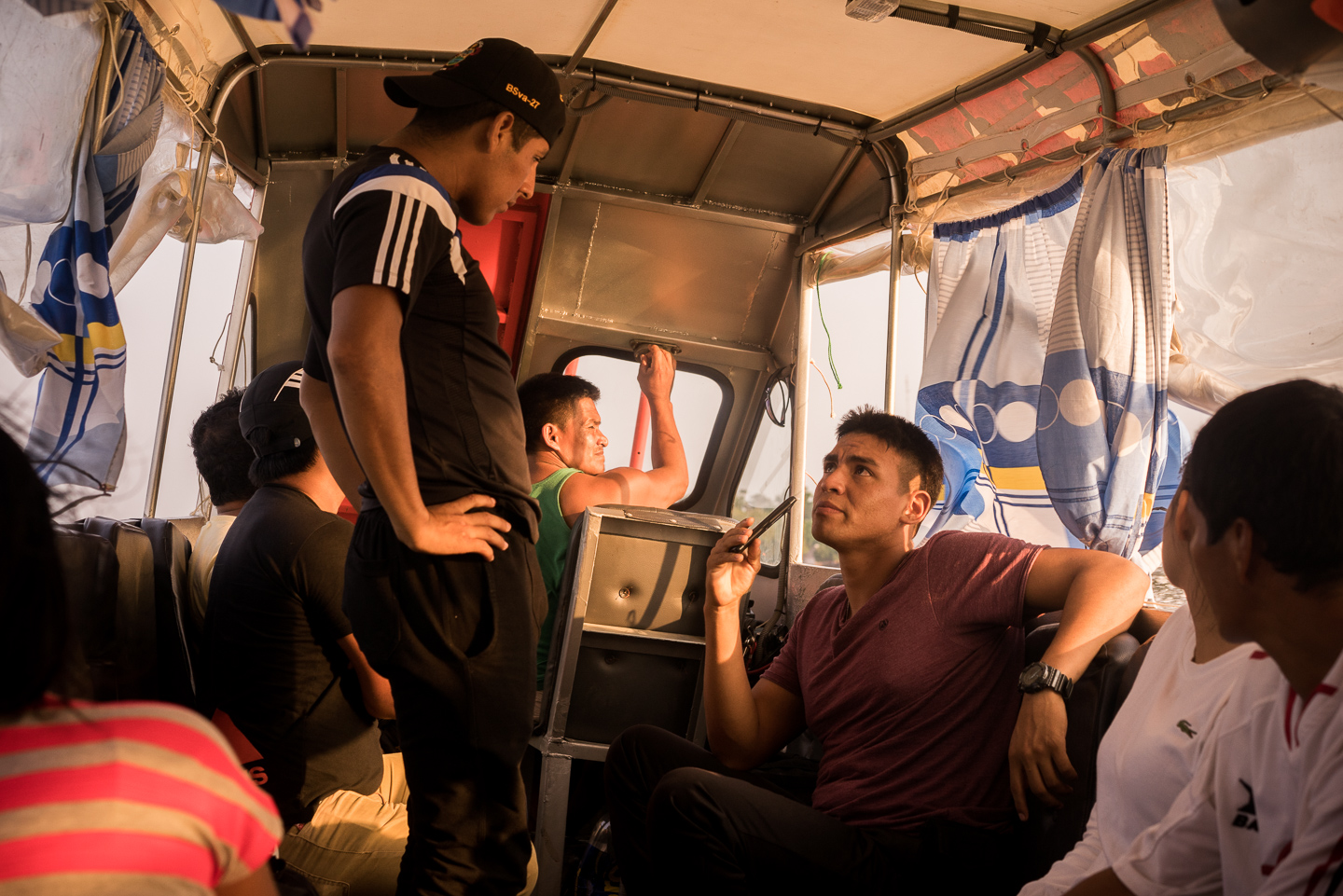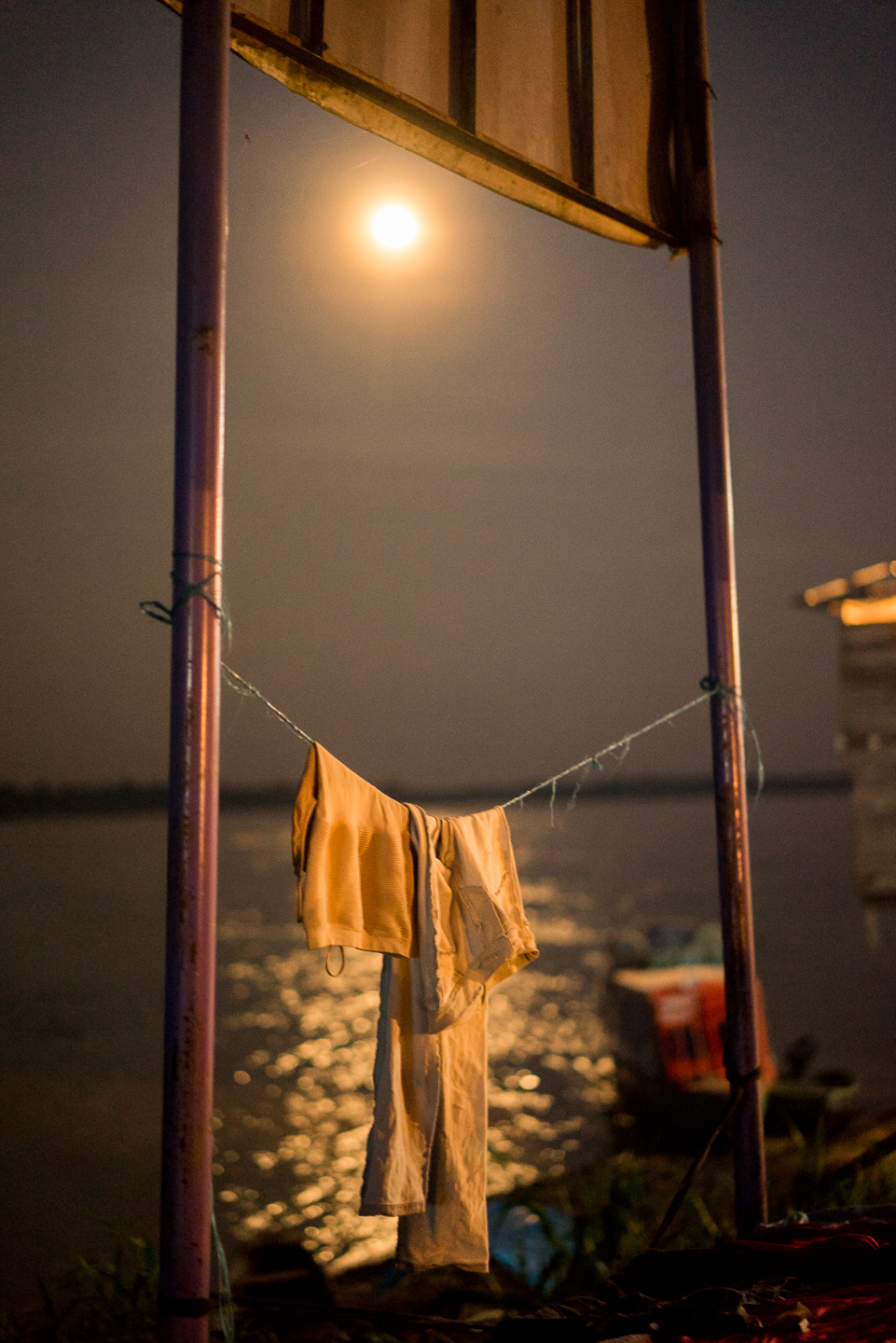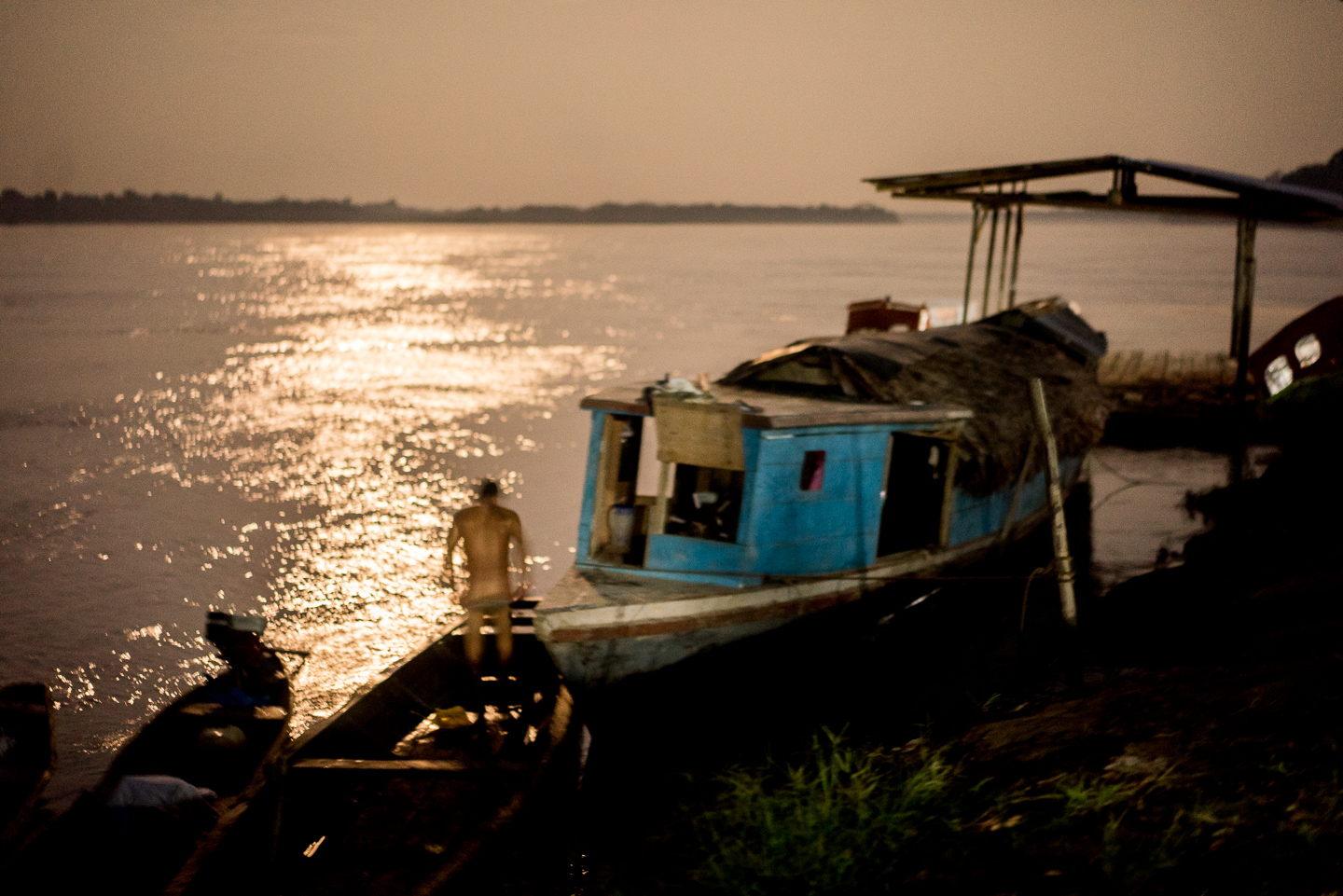When I was in El Coca I asked a couple of people how to get to Iquitos from the Ecuadorian-Peruvian border on the Napo River. Nobody knew. Even at the tourist information desk. I was getting a bit worried until a boat driver told me there is one small boat from Pantoja, the Peruvian border town, to the village of Mazán, which is close to Iquitos on the Amazon River. This boat sets sail only on Mondays at 6am and the trip takes two days with a stop in Santa Clotilde to spend the night. He also told me there is another cargo ship on this stretch of the Napo River: "The trip on this ship takes around 3 days. It is cheaper than the small boat and they feed you really well. You sleep in a hammock and it is a beautiful adventure. However it has no schedule: You can be lucky and wait just a couple of days in Pantoja or get stranded a couple of weeks there". There is practically no formal commerce between Ecuador and Peru in this region. This is why transport means are scarce. After this talk, I decided to play it safe and aim at the small boat.
Pantoja is a really small village. It has no roads for cars or motorcycles, just sidewalks for people and bikes. It has a school, a police department, a migrations office and a public hostel. Although it is on the Napo River, running water is scarce and electricity comes for only 4 hours a day.
I arrived on a Sunday morning and was lucky enough to meet two teachers of the school. Tourism is almost nonexistent here, so they were really happy to meet foreigners. They offered to show me their village. They were both from Iquitos and gave me advice on the dos and don’ts while being there (including the famous "don’t walk with your cameras on your neck because you’re gonna get mugged”).
During our walk, I told them about my project and the trip. I also told them about the future Manta-Manaus commercial route and they didn’t believe me. “During summer, the Napo River is too low for large boats to sail the Napo. This is one of the reasons the cargo ship hasn’t arrived in two weeks. I don’t think this project makes sense” - they told me.
I stayed just one night at the only hostel in town and woke up at five o’clock to get to the boat. The trip was long and boring. There are almost no villages in this part of the river and therefore we didn’t meet many boats or people. Sadly, what we saw along the river were big chunks of land without trees: deforestation is a growing issue in the Peruvian Amazon.
We got to Santa Clotilde when the sun was setting. This town is a bit bigger than Pantoja: people move on bikes and motorcycles. Hungry as hell, I ran to the first small cafe I saw and ate rice with chicken (this was the 5th day in a row I ate rice with chicken, not because I love it but because it is the only thing people serve in the few cafes in the Amazon).
After dinner I felt really tired and didn’t shoot much. Just a naked guy having a bath in the river under the moonlight. After that I wen’t to a hostel.
Next stop: Iquitos

